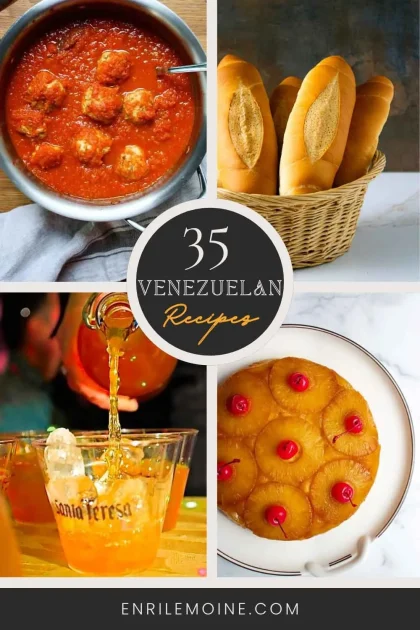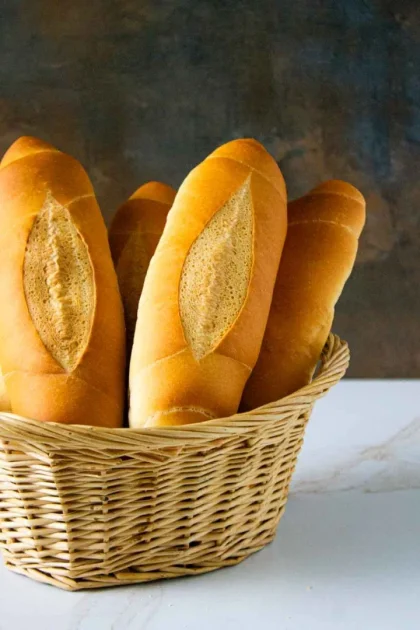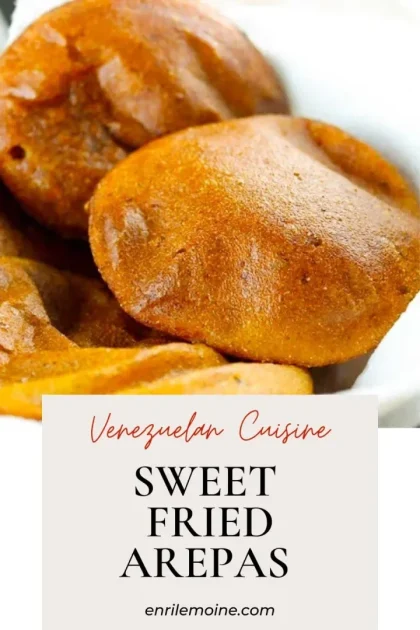Pavlovas are made to impress. And this berry pavlova is no exception. Isn’t this the most beautiful and elegant dessert ever? And guess what: it’s gluten-free!
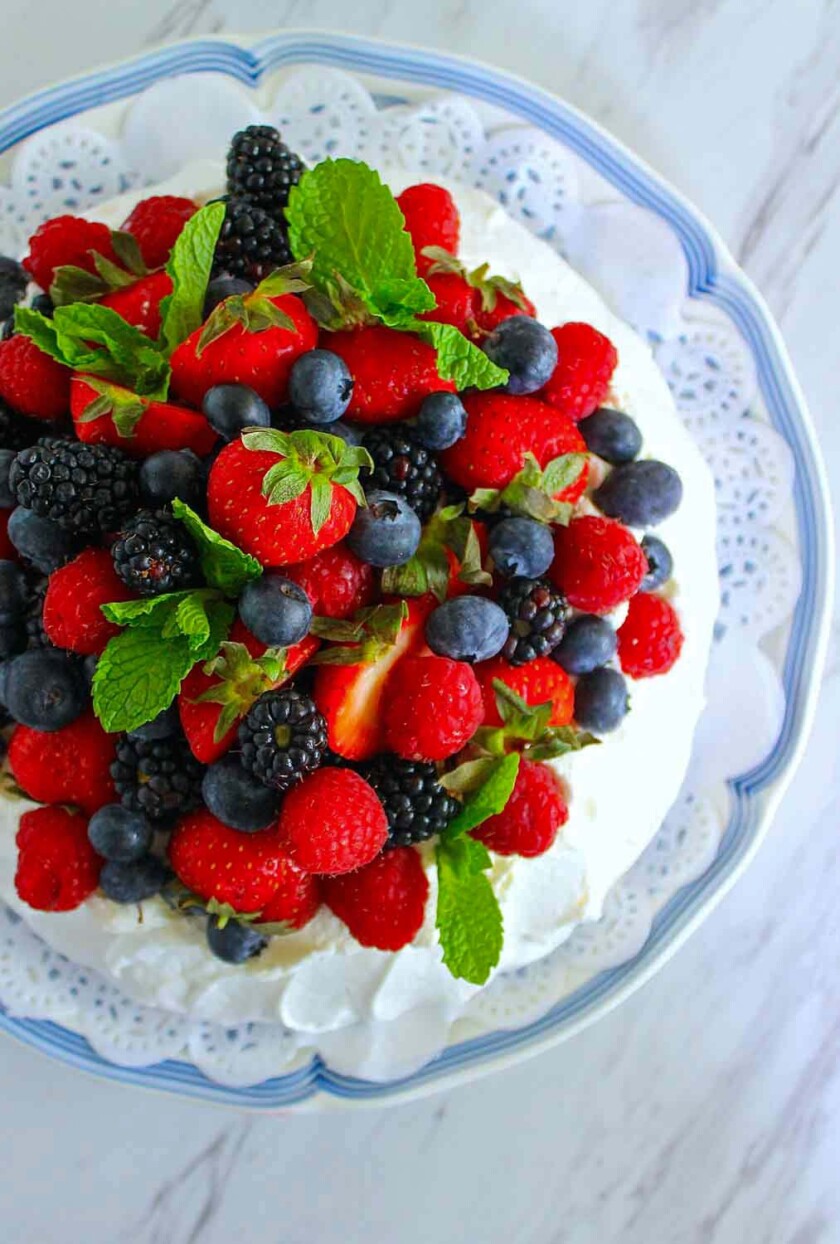
This pavlova is the perfect ending for any festive meal, Mother’s Day, a patriotic celebration, including the Fourth of July, a baby shower, or an afternoon with friends…
Note: As a member of the Amazon Associates Program, I receive compensation for products sold through affiliate links in this post at no cost to the buyer.
Pavlovas: from intimidating to the easiest dessert
Yes, pavlovas are made to impress. And they can be intimidating, too. But trust me, you’ll love my recipe because there is no mystery. Here, Pavlovas are debunked. And trust me, they are one of the easiest desserts I’ve ever made.
I always thought making pavlovas would be complicated because the meringue would crack and not hold the whipped cream and the generous amount of berries I wanted to add on top.

Then, I learned there was something called Swiss meringue (as well as Italian and French meringue), so I needed help. I was lost!
But stubborn as I am and committed to making my berry pavlova something that everybody can make, I researched and asked my chef friends, and then I did my thing and devised a recipe that is a true mélange of the savoir-faire of those who know.
A tribute to Anna Pavlova
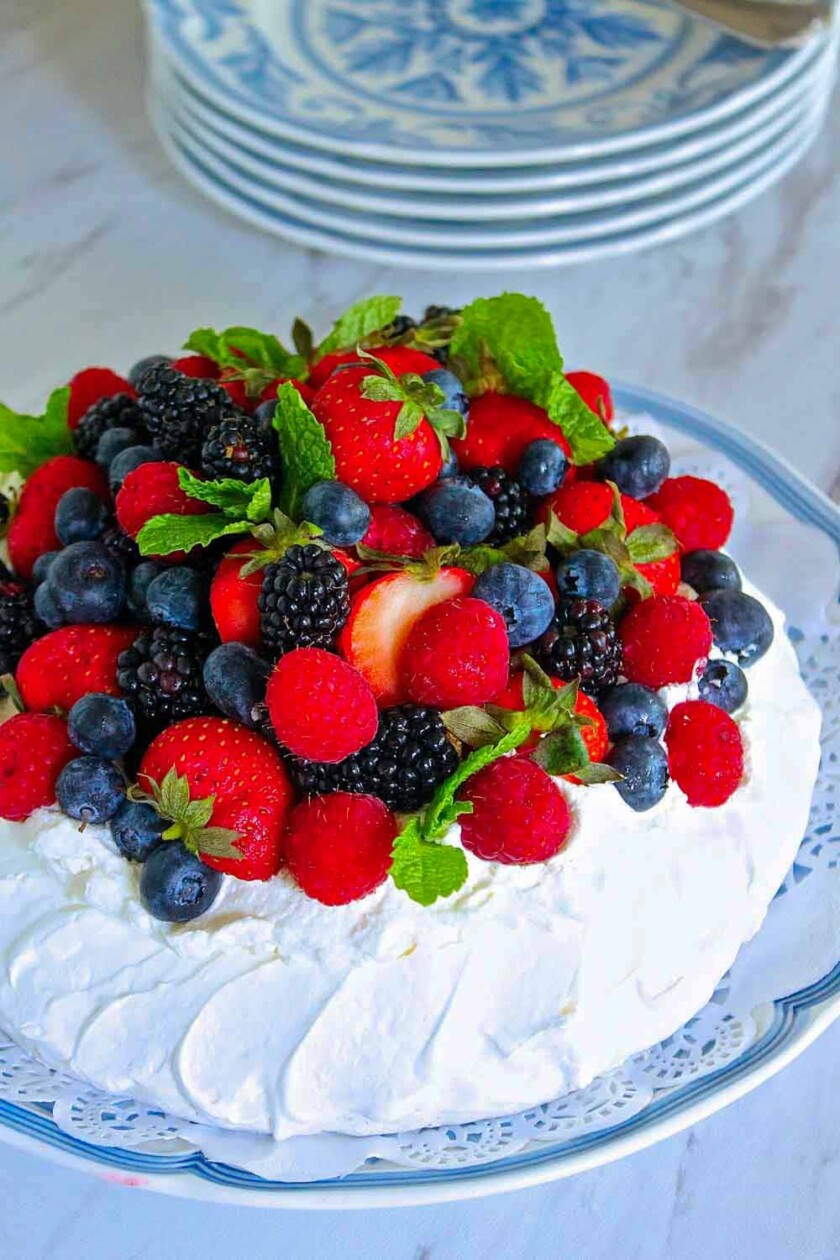
But what about this dessert? Where does it come from? Why is it named Pavlova? There is a controversy between New Zealand and Australia about the origin of this meringue, whipped cream, and fresh berries delight.
It was created to honor Russian ballerina Anna Matveyevna Pavlova. She was the prima ballerina of the Imperial Russian Ballet in the late XIX and early XX centuries. She toured both countries in 1926, hence the controversy.
Ingredients to make a Mixed Berry Pavlova
To make this beautiful pavlova, you will need:
- Eggs
- Granulated sugar
- Pecans
- Dulce de leche
- Heavy whipping cream
- Mascarpone
- Confectioner’s sugar
- Almond extract
- Berries
- Spearmint
Tips to make the Best Berry Pavlova ever
The following are my tips for making the perfect pavlova. I’m and will be forever grateful to my dear cousin Gebsy Villarroel (an engineer and trained chef pâtissier in Paris), Angelo Taveras (also an engineer and a chef pâtissier by trade in Santo Domingo, Dominican Republic), Patricia Zerpa, creator of the Baking Club, and Mary Selgas—the girl who makes the most beautiful cakes in the Great Miami area.

- Don’t be afraid. You can do it. The only thing you need is to follow the instructions and be patient.
- While separating the whites from the egg yolks, ensure there is no trace of yolks in your whites. Do one egg at a time, so you only have to put that egg white apart if a drop of yolk (or a simple yolk trace) appears. Save the yolks for another purpose (like making crème brûlée or a good pasta alla carbonara.)
- Add a few drops of lemon juice while beating the meringue to ensure it remains white as snow.
- Add toasted and ground nuts (I used pecans) to half of the meringue to make a supreme pavlova base with extra crunch and flavor.
- Draw the shape of your pavlova on a sheet of parchment paper. I used a 9-inch cake pan as a guide. Secure it on the baking sheet by adding one meringue drop in every tray corner. Dust the paper with cornstarch to prevent the meringue from sticking to it.
- Form the shape on the prepared baking sheet with meringue and nuts. Then, add the plain meringue on the edges of the base to create a sort of nest or basket. Decorate the meringue shell with the back of a spoon, forming peaks.
- Bake your meringue at 170˚F for 2 hours. When perfectly baked, let it utterly cool inside the oven. Let the meringue rest in the oven with the light on until you fill your pavlova with the whipped cream and the mixed berries.
- Assembly your pavlova immediately before serving it.
Making the meringue: Debunking the myths or rules can be broken

A rule of thumb in the patisserie world states that for a firm and silky meringue, the ratio is 1:2, meaning one part egg whites and two parts sugar. That ratio produces the stiff peaks we’re looking for. However, rules can be broken.
Because I try not to eat that much sweet, I substantially reduced the amount of sugar: 120 grams of egg whites and only 180 grams of sugar. That 1:1.5 ratio worked perfectly fine. With that sugar amount, the resulting soft peaks of meringue provide a not-so-sweet nest for the treasure inside.
Of course, I chose Swiss meringue because, for me, Swiss equals perfection. No worries: meringues and their different passports will be the subject of another post.
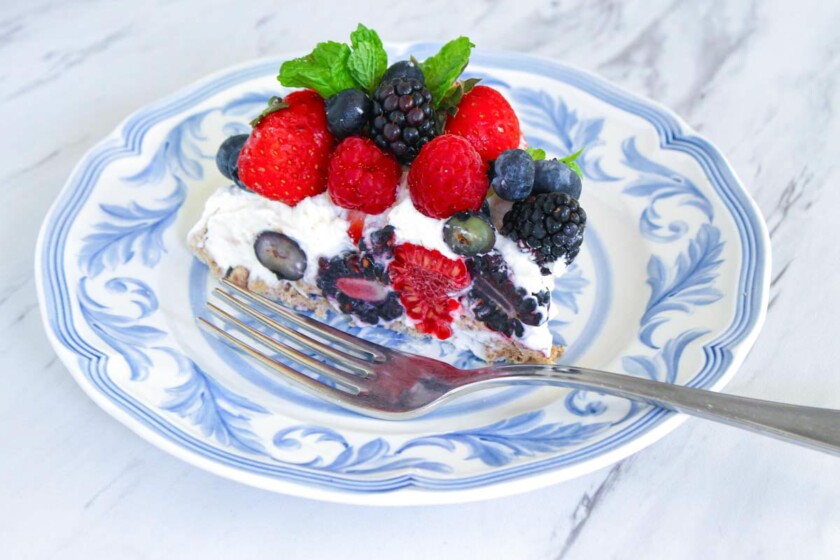
How do I assemble the most delicious Pavlova?
- Once you bake your meringue, add a thin layer of dulce de leche (also known as manjar, cajeta, or arequipe) on the bottom of the meringue shell.
- Then, in the middle of the pavlova, add a mixture of whipped cream and mascarpone cheese, slightly sweetened with confectioner sugar and flavored with a few drops of almond extract.
- Finally, bury some berries in the cream mixture. I do this to ensure the berries on top have good support. Then, top off with as many berries as possible, creating a beautiful random display of strawberries, blueberries, blackberries, and raspberries! The cherry on the cake? Add a few spearmint sprigs for a fresh green touch.
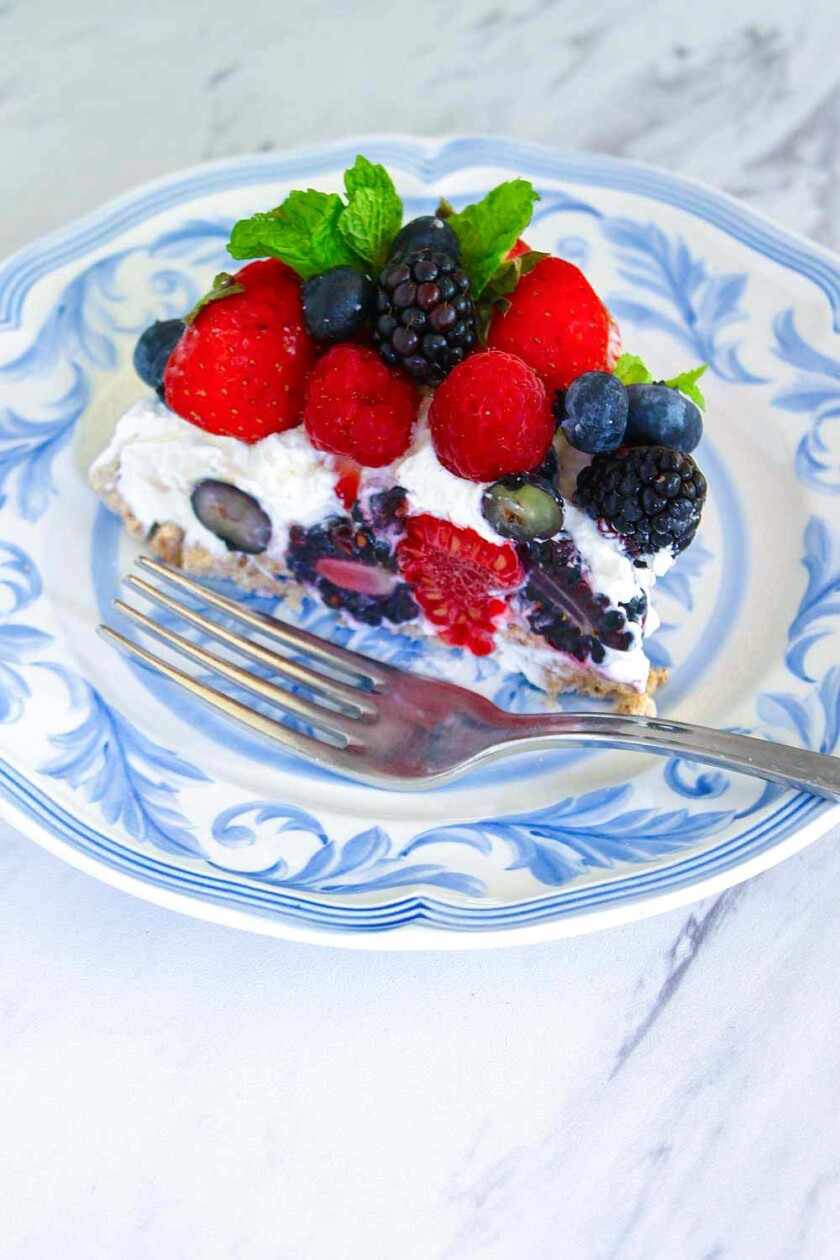
How to serve this dessert?
While cutting and serving the pavlova piece for the pictures, I was extra careful to show you a clean transversal cut. That clean cut was hard to get. When you serve this dessert, it will mess up and look more like an “Eton mess,” the British meringue, whipped cream, and fruit dessert.
However, after impressing your guests, who cares about the mess? Especially if you serve your pavlova paired with bubbles: champagne or prosecco.
Substitutions & Variations
- Instead of mascarpone, you can use a mixture of cream cheese and whipping cream.
- You can use walnuts instead of pecans or skip the nuts.
- You can skip the mascarpone or cream cheese and fill your pavlova with sweetened whipping cream.
- Instead of a cream mixture, fill up your pavlova with lemon curd and berries.
- Instead of plain berries, add fresh fruit as you like: kiwi, mango slices, persimmons, and passion fruit pulp for a tropical explosion of colors and flavors.
- Instead of almond extract, which I love because it enhances the flavor of the pecans in the meringue base, substitute it with vanilla extract.
- Make mini Pavlovas for a cute presentation. If Pavlovas are made to impress, think about the cuteness of a mini Pavlova.
- You can also make bite-size pavlovas, which will be the center of attention on any dessert table.
How to store this dessert
As with any meringue-based dessert, pavlovas are fragile. They can be stored in an airtight container for up to two days, but don’t expect the berries to be at their premium. Pavlovas are best when they are super fresh.
More berry recipes
Hungry for more berries recipes? Check these out:
- Arugula and strawberries salad
- Blueberry and lavender mojito
- Chevre, strawberry, and basil bruschetta
- Chocolate-covered strawberries
- No-bake mojito cheesecake
- Strawberries and mozzarella skewers
- Strawberry panna cotta with basil and balsamic reduction
- Strawberries with goat cheese mousse
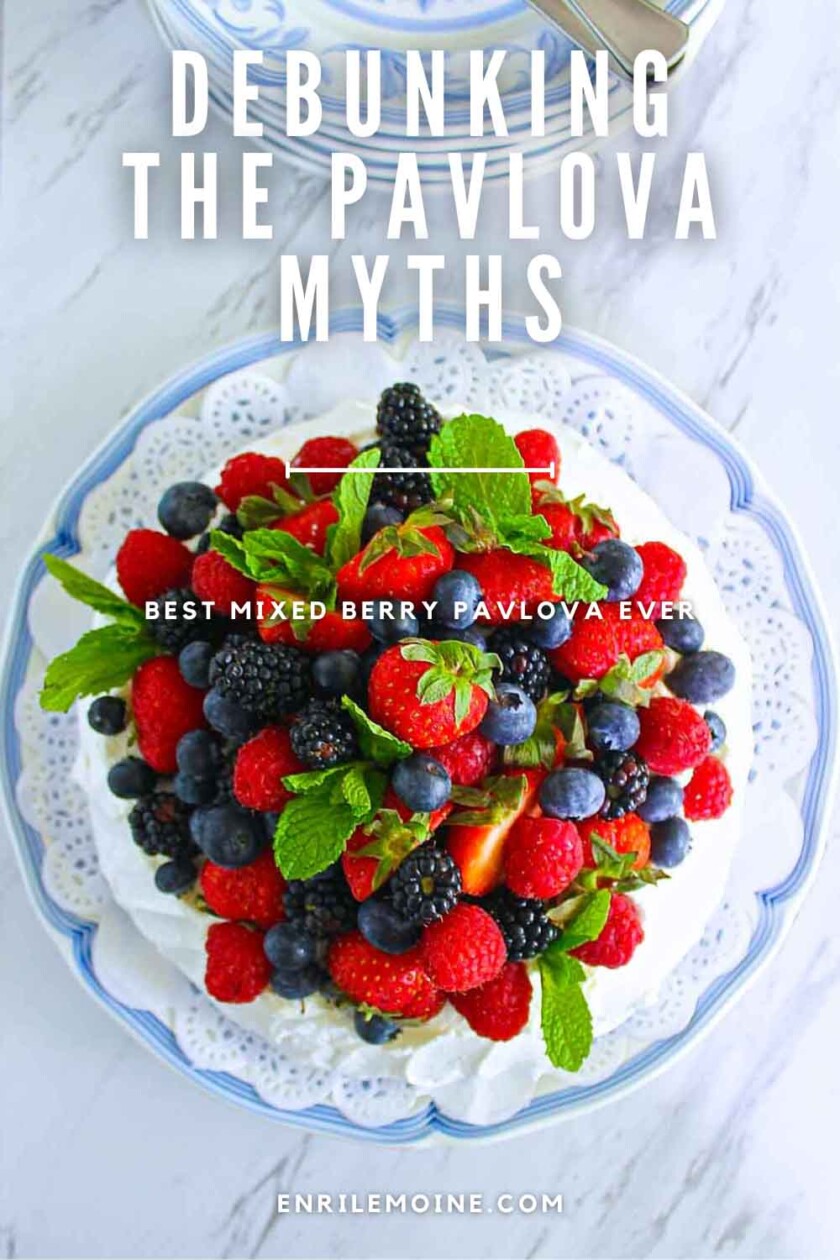
Easy Berry Pavlova Recipe
Following is a printable version of my recipe. I hope you enjoy making it as much as I did.
Thanks for subscribing to my YouTube channel and visiting my Amazon shop.
Mixed Berry Pavlova
Ingredients
For the meringue
- 120 grams egg whites about 4 egg whites at room temperature
- 180 grams sugar
- 1/4 cup pecans toasted and finely grounded
- cornstarch
- 1 lime
For the filling
- 1 cup heavy cream
- ½ cup mascarpone
- 1/3 cup confectioners sugar
- 1/4 teaspoon almond extract
- 3 tablespoons dulce de leche
- 2 Mixed berries
- Spearmint sprigs
Instructions
- For the meringue base
- Preheat the oven to 170˚F.
- Add the egg whites and sugar in a small stainless steel bowl and place in a bain Marie, ensuring the bowl doesn’t touch the water.
- Whisk continuously until the sugar is completely dissolved. Touch the mix with your fingers to ensure no sugar granules.
- Place the mixture in a standing mixer bowl. With the globe, beat at medium speed until the meringue is completely cold and stiff, forms peaks, and looks like satin.
- Divide the meringue into two halves.
- Add the pecans to a bowl and combine them with half of the meringue.
- Draw a 9-inch circle on a piece of parchment paper. Place the parchment paper on a baking tray with a meringue drop in every corner. Dust it with cornstarch.
- Use a spatula or a piping bag to fill the shape, beginning in the middle of the circle, with the pecan meringue. The result should be a meringue disk.
- Add a few lemon drops to the rest of the meringue and combine it with a spatula.
- To create a basket, distribute the plain meringue around the pecan base’s edges. Decorate the meringue shell with the back of a spoon, forming peaks.
- Bake for two hours.
- Turn off the heat and let the meringue utterly cool inside the oven.
For the filling
- Freeze the bowl where you’re going to whip the cream.
- With the globe, whip the cream and the mascarpone and progressively add the confectioner sugar.
- Once the mixture has the desired consistency, add the almond extract and mix.
- Spread the dulce de leche on the bottom of the meringue (the one with the pecans on).
- Fill the meringue basket with the cream.
- Push some of the berries inside the cream.
- Top with as many berries as you want, and garnish with fresh spearmint.
- Place de pavlova on a serving platter and refrigerate until serving time.
Nutrition
Did you make this recipe?
Tag @enrilemoine on Instagram and hashtag it #byenrilemoine. Thank you!
- Mashed Potatoes with Leeks and Swiss Chard Recipe - October 15, 2025
- 35 Foolproof and Fuss-Free Authentic Venezuelan Recipes - October 2, 2025
- Venezuelan Pineapple Upside-Down Cake Recipe - September 23, 2025




